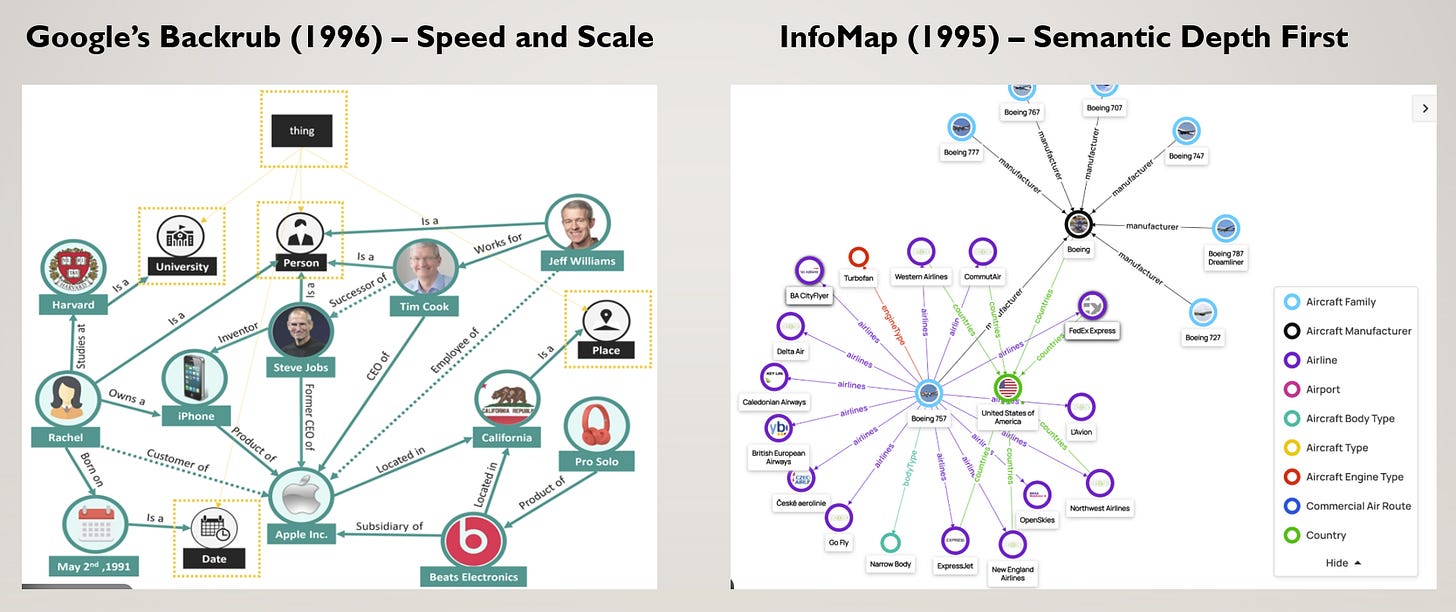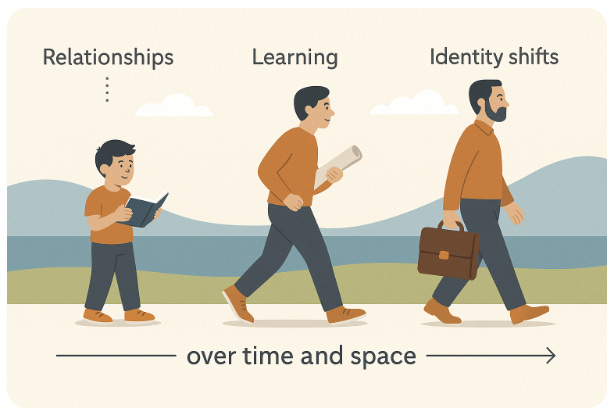Honoring KK Aw (1949–2021) — Mentor, Innovator, Friend
From InfoMap to Scooter Tours Malaysia — Celebrating KK Aw’s Legacy of Curiosity, Knowledge Mapping & Conscious Living
Aw Kong Koy, affectionately known as KK Aw, was more than a mentor—he was an intellectual companion whose mid‑’90s work on InfoMap/MultiCentrix introduced:
Bidirectional semantic links, enabling knowledge to connect symmetrically
Multicentric visualizations, allowing any entity—person, place, concept—to be the focal hub
Collaborative aliasing, with layered names and descriptive perspectives
Interface-as-object mapping, moving relationships into first-class data
Decades before knowledge graphs and semantic webs became mainstream, InfoMap laid the groundwork. InfoMap also won the 1998 Malaysia’s PIKOM-COMPUTIMES Product (Software) award.
KK Aw also helped set-up Malaysia’s biggest bulletin board system called Online Malaysia and ran it together with his partner, KH Koh, before the internet made it obsolete. See how KH Koh remembered his partner here.
🎬 What‑If Story: A Hero’s Journey Reimagined
Framed around the four-phase Hero’s Journey, this narrative blends KK Aw’s journey with a compelling alternate history:
Call to Adventure (Early 1990s)
In 1995, KK Aw awoke with one question: “What if every piece of knowledge linked both ways, could be explored from any perspective, and be enriched collectively?”Crossing the Threshold (1995–1998)
He built InfoMap, enabling hierarchical, associative, and interface-based relationships to be dynamically visualized around any selected entity.Trials & Transformation
In Malaysia, he created custom solutions using AutoCAD’s GIS capabilities, enterprise knowledge systems, CD-ROM content, and technical documentation—but these efforts remained locally impactful.Return with the Elixir
What if, in 1996, InfoMap had launched from Silicon Valley with VC support and technical networks? It might have become the first knowledge-graph search engine, preceding Freebase (2007) and Wikidata (2012) by over a decade.
🛠️ What‑If Comparison: InfoMap vs. Backrub
🧠 InfoMap (1995) – Semantic Depth First
Two‑way linking, preserving full relational traceability
Alias support and metadata, enabling multiple perspectives per entity
Interface-as-object modeling, enriching links with semantic meaning
Centered, multi-perspective visualization, allowing dynamic exploration
InfoMap anticipated the structure of modern knowledge graphs—semantic, deep, and flexible.
⚡ Google’s Backrub (1996) – Speed and Scale
PageRank algorithm by Larry Page & Sergey Brin
Broad crawling and full-text indexing, scaling across millions of pages
Simple, fast, developer-friendly UI
🏁 Conclusion: Depth vs. Speed
InfoMap offered structural and semantic depth, with the ability to navigate rich relationships, aliases, and metadata in multicentric fashion.
Backrub, transformed into Google, emphasized speed and scale, using PageRank and straightforward architecture to conquer web search.
Conclusion: Google won due to its focus on speed and simplicity, hitting the web just as demand exploded. Yet, had InfoMap launched from Silicon Valley in 1996 with investment and institutional support, it could have been the first knowledge-graph search engine, paving the way for semantic tools over a decade earlier.
🌟 PLIF – Peconaqri Learning Information Framework: The Hero’s Companion
PLIF—Peconaqri Learning Information Framework—can be seen as a Personal Information Management (PIM) tool that is deeply influenced by my mentor, KK Aw. His multicentric perspective taught me to flexibly shift perspectives and map structure through relationships and interactions—anchoring PLIF’s design, even as the tool remains my own innovation.
🎯 Core Vision: A Hero’s Lifelong Journey
From the moment of birth, our hero—like each of us—emerges into an intricate external world full of people, systems, natural and man‑made entities, and a parallel digital realm.
Throughout our life adventure, every encounter—physical or digital—places us in one of three roles:
Impacted/Victim: Passively influenced by the external world.
Free Agent/Hero: Taking action and shaping outcomes proactively.
Curious Learner: Drawn by wonder, choosing to revisit and learn from the interactions later.
While many live only in the survival victim or ambition hero mind-set, PLIF actively nurtures the Curious Learner—ensuring that curiosity becomes a lifelong companion.
📁 Folder Mapping: Our Hero’s Life Journey
KK Aw’s multicentric perspective helped shaped the architecture of the PLIF series folders:
Embracing changing centers—from outside-in to inside-out
Viewing lives through networks of interactions with people, systems, and entities
PLIF structures life into domain-specific personas:
Personal Persona: 14 folders
Business Persona: 15 folders
Professional & Student Personas: 9 folders each
Each folder corresponds to a distinct interaction domain—finance, health, relationships, and more—allowing clear and organized life tracking.
A key special folder— 💡CTA (Call-to-Adventure) Seeds—stores sparks of pure curiosity. These seeds mark the beginning of new adventures, capturing ideas that may bloom into learning quests, personal projects, or broader missions.
🧬 System Qualities: Simplicity Rooted in Depth
PLIF’s architecture captures the full sweep of human interaction:
Three core categories of interaction (Victim, Hero, Learner) across physical and digital realities
Event‑driven organization: Each interaction triggers issue-related folder creation or project initiation.
Scalable & lifelong: As the hero grows, PLIF adapts—tracking relationships, learning, and identity shifts over time and space.
🔧 Four Stages of the Project‑Based Hero’s Journey
PLIF supports a four-stage hero’s journey based on the Project-Based Learning (PBL) approach to achieve a goal:
CTA Seed: Plant the idea—sown from curiosity or need.
Project Incubation / Bootcamp: Research and structure a plan.
Learning Quest: Execute a series of tasks to learn, build, or resolve issues.
Completion, Expression & Publishing: Finalize, reflect, share, or publish results.
Projects can span days (a task or personal goal) or years (a business venture or deeper professional pursuit).
✨ Mentorship & Consciousness: From Nodes to Human Beings
KK Aw taught me the power of changing observational centers, diving into relationships and depth—principles now embedded in PLIF’s architecture.
This aligns with Federico Faggin’s philosophy, which views each human as an “instance of consciousness in an external playworld,” navigating inner and outer realities to grow. PLIF becomes a practical tool for that journey, helping us map our consciousness as we act, learn, and evolve.
Note: See Beshara Magazine Interview with Federico Faggin
📚 Scooter Tours Malaysia: A Retirement Expression
KK Aw retired from working on software and embarked in 2017 on a new project—Scooter Tours Malaysia, sharing layered views of Malaysian life via YouTube and Facebook:
“This channel is for videos of Malaysia seen from multiple perspectives… aiming to create a comprehensive video record of life in Malaysia at a different level of detail and coverage.”
With his kick‑scooter, he blended mobility, curiosity, and storytelling in ways no conventional medium could.
⏱️ Tribute in less than 24 Hours: My CTA‑to‑Draft Workflow
Seed: Woke-up this morning and has a thought—“KK Aw deserves honor.”
Incubation (2 hrs): Archive research + AI prompts
Drafting: Tribute & what‑if scenarios with ChatGPT
Polish: Final refinement—all completed within a single day
Proof that ChatGPT can transform reflection into recognition swiftly and meaningfully.
🔗 Attachments & Links
✅ Why This Matters
IT researchers: Rediscover early semantic search innovation
KM practitioners: Explore deep-centered relational mapping
🫶 Acknowledgements
This post was co-written with the help of ChatGPT, as part of a Hero’s Journey learning process, based on curated materials, structured insights, and reflections by Jin Lee.
✍️ Jin Lee, Founder of Peconaq Inc.










